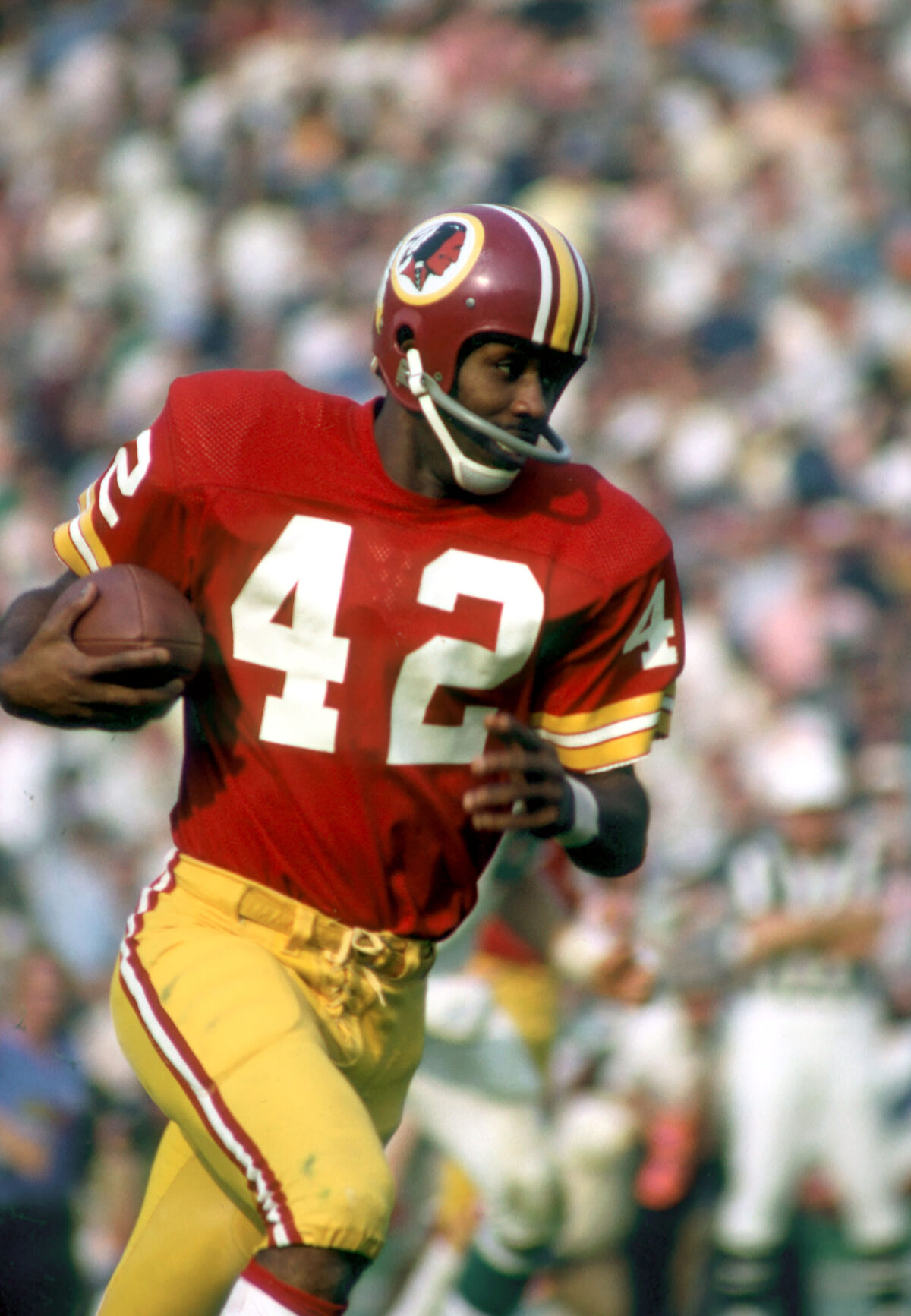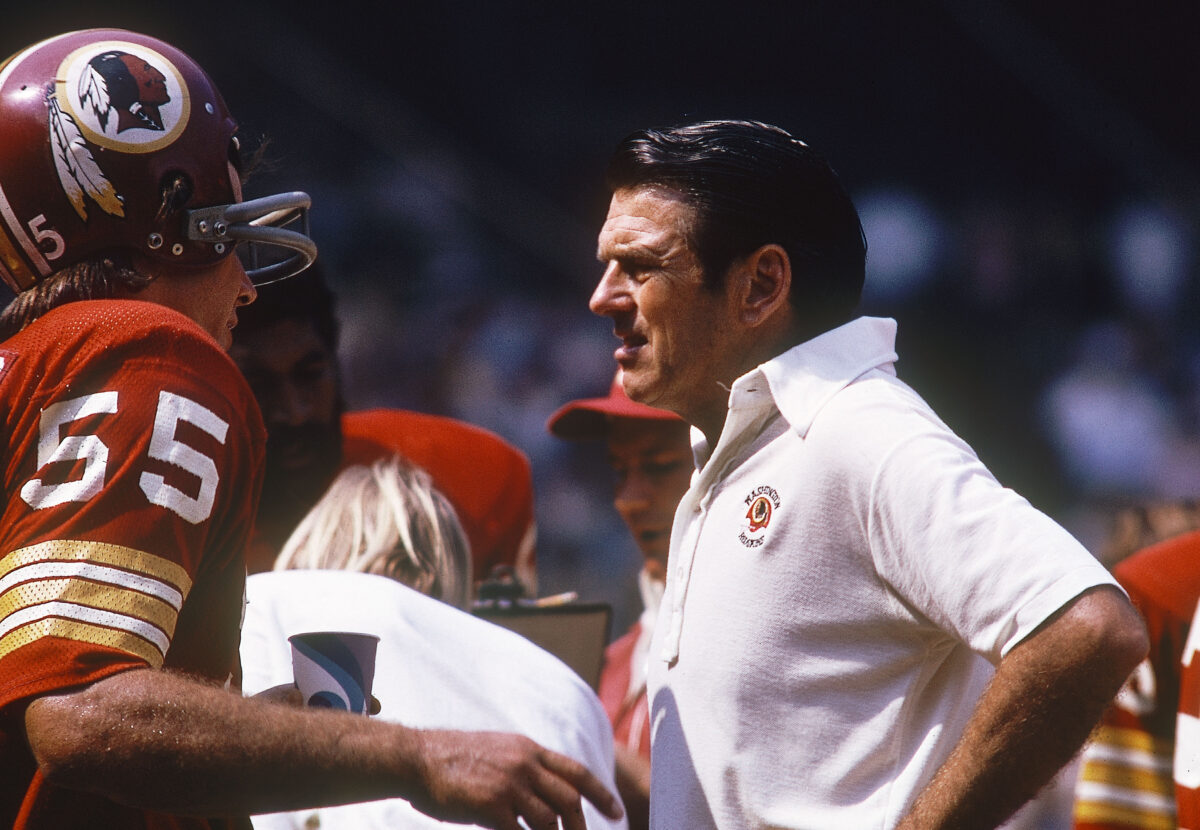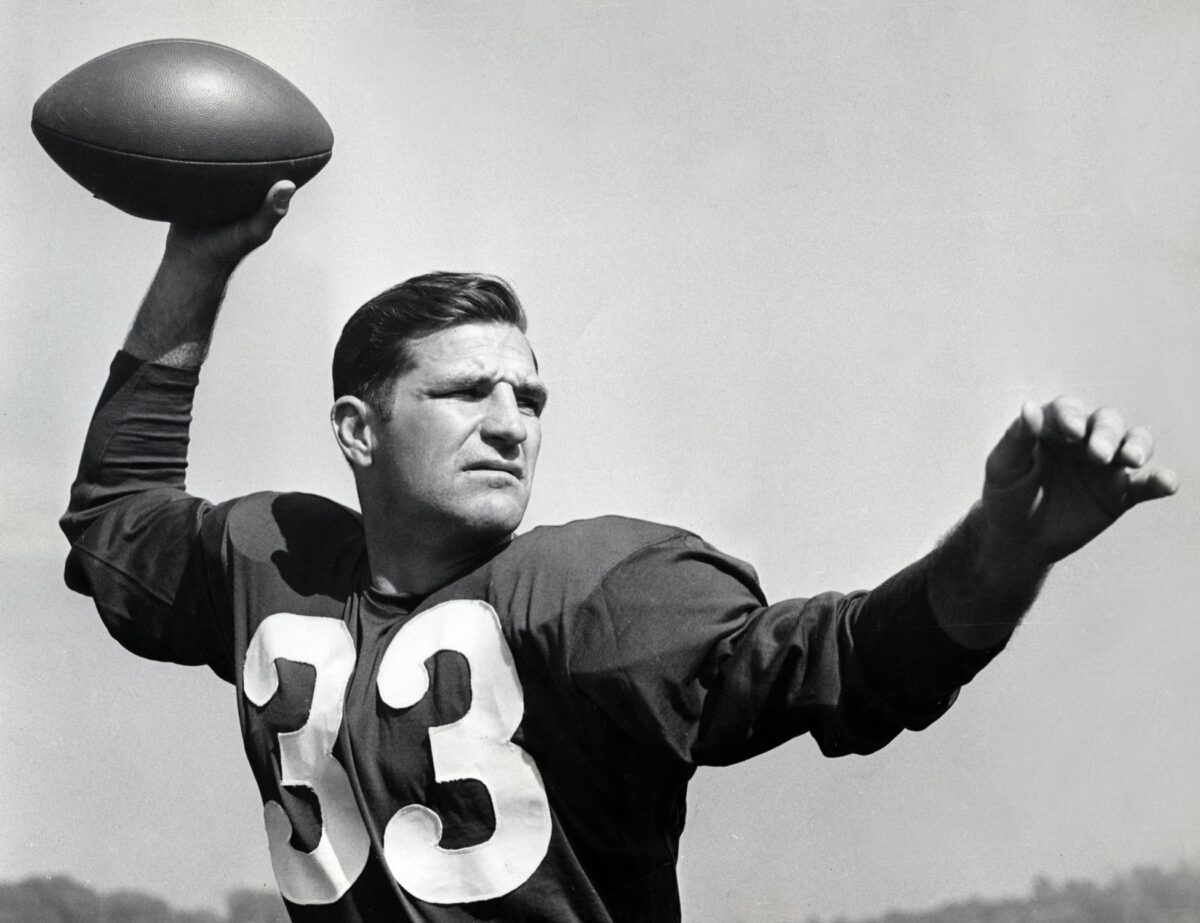Commanders Wire continues a countdown to the Commanders season opener for 2023 in 42 days. Who was Washington’s best player wearing number 42?
On June 1, 1978, Washington Redskins receiver Charley Taylor announced his retirement from the NFL.
Since that day, though Taylor’s jersey was never retired, no Washington player has yet to wear No. 42 in a regular season NFL game.
Taylor came to Washington in 1964, a first-round draft choice out of Arizona State. He had played running back for the Sun Devils and continued to play running back his first three seasons in Washington (1964-66).
When Otto Graham, a former Cleveland Browns quarterback, became the Washington head coach (1966-68), Graham made a move that changed NFL history. During the 1966 season, Graham switched Taylor to wide receiver.
Instantly Taylor led the NFL in receptions in his first two seasons at receiver with 72 in 1966 and 70 in 1967. Pairing Taylor and Bobby Mitchell outside with Sonny Jurgensen at quarterback for the Washington offense was exciting.
Taylor had been a Pro Bowler at running back his first two seasons, and Graham thought he could be even better at receiver. Graham was certainly correct, and Taylor became a Pro Bowler again in 1966 and was an All-Pro first-team receiver in 1967.
Taylor’s last largely productive season as a pass catcher was the 1969 season, Vince Lombardi’s lone season as Washington’s head coach. Catching 71 passes for 883 yards and eight receiving touchdowns, Taylor was voted All-Pro second team.
Taylor was off to a great start in 1971 when Washington started 5-0. In the sixth game (at Kansas City), Taylor caught a pass in the first half. However, the tackle in the end zone broke his ankle, and Taylor was lost for the season, having already collected 24 receptions and four touchdowns in 5.5 games.
With George Allen becoming the head coach in 1971, the Redskins offense was much more conservative, with running back Larry Brown becoming the nucleus. Thus, Taylor caught 49, 59, 54 and 53 passes in those seasons (1972-75), still making the Pro Bowl each of those seasons.
A broken shoulder in the 1976 preseason cost Taylor his entire season. At age 36 in 1977, a lingering hamstring problem limited Taylor to only seven starts and 14 receptions, leading to his retirement in June, as he had seriously contemplated a final season in 1978.
When he announced his retirement, Charley Taylor had caught more receptions (649) than any other receiver in NFL history. This despite the fact he was a running back his first two seasons and missed another season entirely (1976).
Charley Taylor#HTTR pic.twitter.com/5wVehd3OBy
— Old Time Football 🏈 (@Ol_TimeFootball) June 13, 2023
He concluded his career amassing 9,110 receiving yards and 79 touchdowns. Though Taylor never played in a 16-game regular season, he still remains second in franchise history in receptions (649) and receiving yards (9,110) and has the most receiving touchdowns (79). Taylor also rushed 442 times for 1,488 yards and 11 touchdowns.
Charley Taylor was voted one of the 70 Greatest Redskins in 2002. After all, Taylor had already been inducted into the Pro Football Hall of Fame in the class of 1984. He was an 8-time Pro Bowler and 4-Time All-Pro selection.
Upon retirement, Taylor worked in the scouting department before becoming wide receivers coach under Joe Gibbs from 1981-1992 and Richie Petitbon in 1993.
Taylor died on Feb. 19, 2022, at the age of 80.



